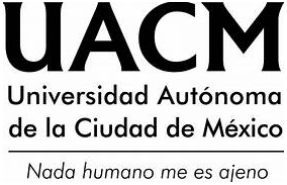ETHICS FOR THE FUTURE? HUMAN RIGHTS AND RESPONSIBILITIES OF THE CURRENT GENERATION TOWARD FUTURE GENERATIONS
DOI:
https://doi.org/10.29092/uacm.v3i6.328Keywords:
Bioethics, human rights, intergenerational rights, responsibility, futureAbstract
Among the third generation of human rights, the appeal for a diachronic solidarity between the human community and the extrahuman natural world, and for a synchronstic one between the community of living human beings and hypothetical members of future human generations, has a significant place. This paper analyzes from a critical perspective the reasons for and against this proposal of duties and intergenerational ethical obligations in the context of a techno-scientific civilization, with the aim of grounding the current generation´s responsibility regarding the elaboration of a global ethics that could face the demands of future generations.
Downloads
References
CECCHETTO, S. (2005a), “Desarrollo social, derechos humanos y medioambiente” en Dorando Michelini, Jutta Wester, Armando Chiappe y Eduardo Romero (editores), Desarrollo y equidad. Río Cuarto: Ediciones del ICALA, pp. 294-297.
_____ (2005b), “Ética, responsabilidad y medioambiente en clave de derechos humanos” en María del Rosario Guerra González (coor- dinadora), Ética y derechos humanos. Toluca: Universidad Autó- noma del Estado de México, pp. 171-195.
ESPOSITO, R. (2002), Immunitas. Protezione e negazione della vita. Torino: Einaudi.
FLATHMAN, R. (1976), The Practice of Rights. Cambridge: Cambridge University Press.
GREEN, R. M. (1977), “Intergenerational Distributive Justice and Envi- ronmental Responsability” en Bioscience, año 27, núm. 4, pp. 260-265.
HÄBERLE, P. (1998 ), Libertad, igualdad, fraternidad: 1789 como historia, actualidad y futuro del Estado Constitucional. Madrid: Trotta.
HARDIN, G. (1972), Exploring New Ethics for Survival. New York: Viking Press.
HEIDEGGER, M. (1957), “Die Zeit des Weltbildes” en Holzwege. Frankfurt am Main: Klostermann, pp. 69-104.
HEISENBERG, W. (1955), Das Naturbild der heutigen Physik. Hamburg: Rowohlt.
HUSSERL, E. (1966), Zur Phänomenologie des inneren Zeitbewusstsein. Den Haag: M. Nijhoff.
JONAS, H. (1974), “I: Technology and Responsability: Reflections on the New Tasks of Ethics” en Philosophical Essays. Englewood Cliffs: Prentice Hall.
_____ (1979), Das Prinzip Verantwortung. Versuch einer Ethik für die technologische Zivilisation. Francfort am Maine: Insel Verlag.
_____ (1985), Technik, Medizin und Ethik. Zur Praxis des Prinzips Verantwortung. Francfort am Maine: Insel Verlag.
LEOPOLD, A. (1949), A Sand County Almanac and Sketches Here and There. New York, Oxford University Press.
MANNING, R. (1981), “Enviromental Ethics and John Rawls’ Theory of Justice” en Enviromental Ethics, núm. 3, pp. 155-165.
MOORE, G. E. (1903), Principia Ethica. Cambrigde: Cambridge University Press.
NORTON, B. G. (1984), “Enviromental Ethics and Ecological Morality” en Enviromental Ethics, núm. 6, pp. 131-148.
RAMOS, Á. (1983), ¿Por qué la conservación de la naturaleza? Madrid: Fundación Conde del Valle de Salazar, mimeo. Discurso de recepción en la Real Academia de Ciencias Exactas, Físicas y Naturales.
TAYLOR, P. W. (1981), “The Ethics of Respect for Nature” en Enviromental Ethics, núm. 3, pp. 197-218.
TESTART, J. (1986), L’embryon transparente. Paris: Flammarion.
Published
Issue
Section
License
This Journal is licensed under Creative Commons Mexico 2.5. It is allowed to reproduce and disseminate the contents of the Journal for educational or research purposes, not for profit, as long as they are not mutilated and cite the source (Andamios, Revista de Investigación Social) and the author.
The copyright of the articles published in Andamios, Revista de Investigación Social are transferred by the author(s) to Universidad Autónoma de la Ciudad de México when the originals have been accepted, so that they are published and distributed both in the printed and electronic versions of the Journal. However, as established by law, the author(s) retains their moral rights. The author(s) will receive a form of assignment of copyright that they must to sign when their original has been accepted. In the case of collective articles, the signature of one of the authors will suffice, provided that the latter has obtained the consent of the others.
Authors may use the material of their article in other works or books published by themselves, with the condition of quoting Andamios as the original source of the texts.
The articles contained in this publication are the responsibility of their authors and do not compromise the official position of Andamios, Revista de Investigación Social of the Universidad Autónoma de la Ciudad de México.


